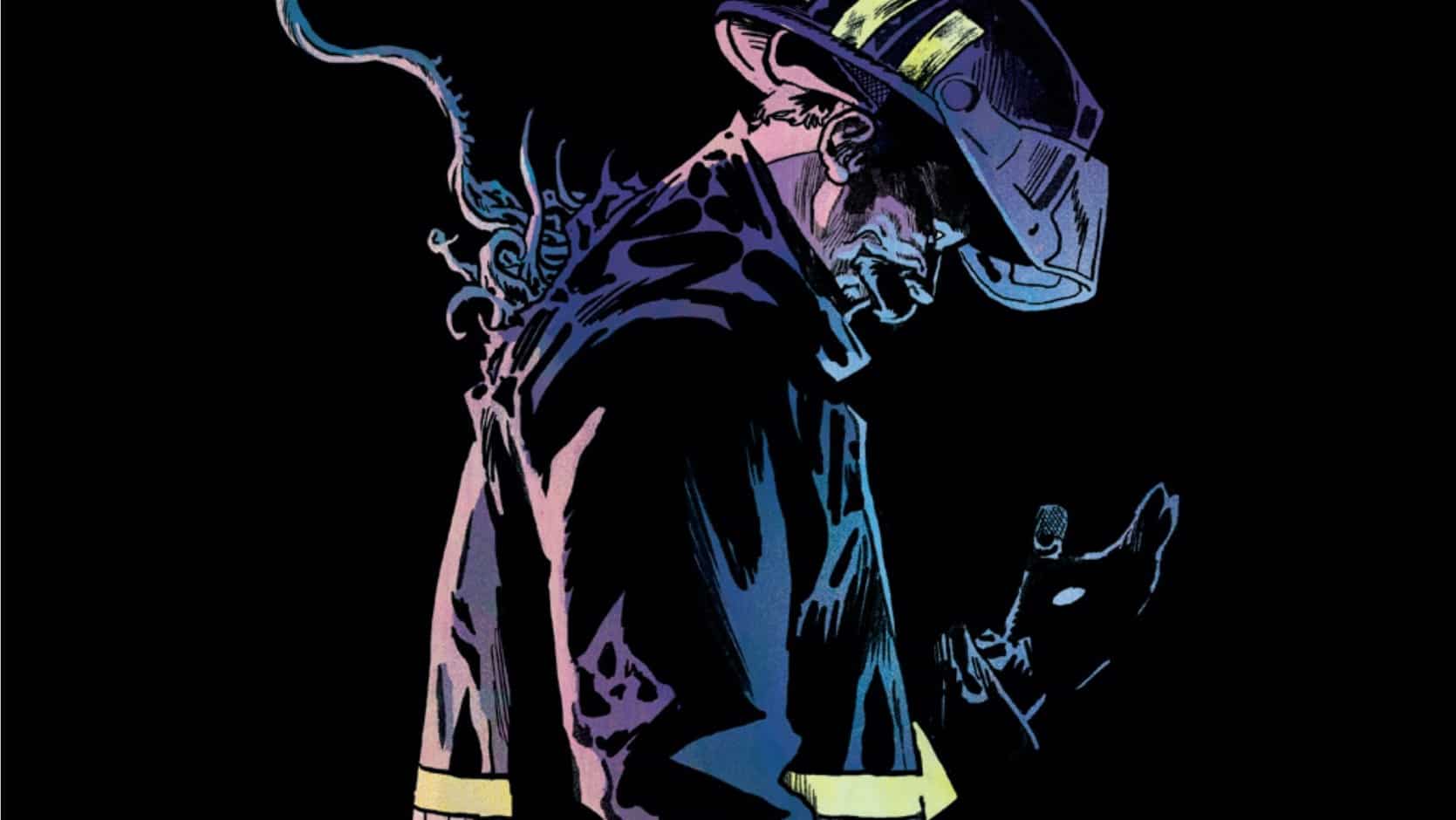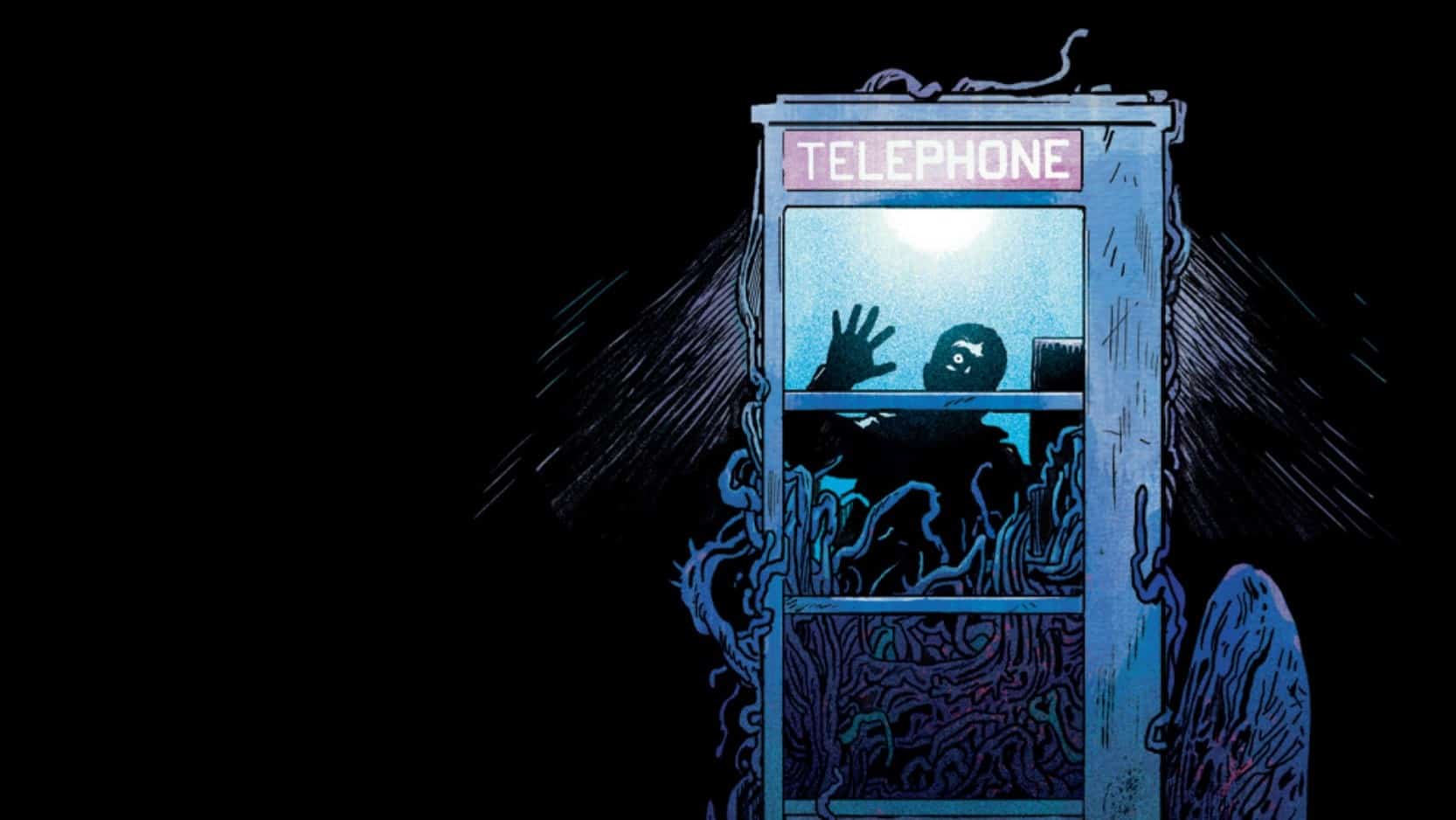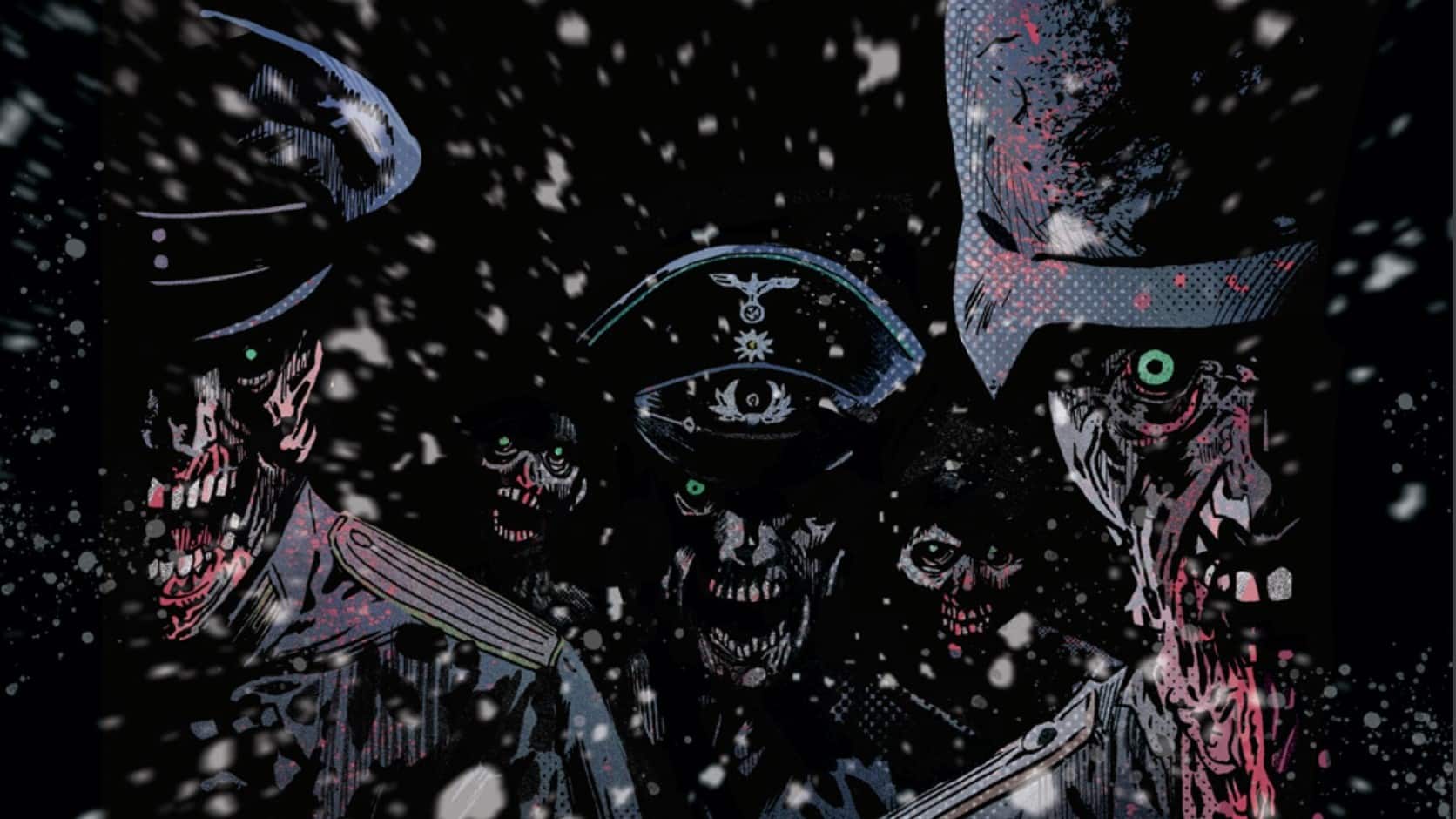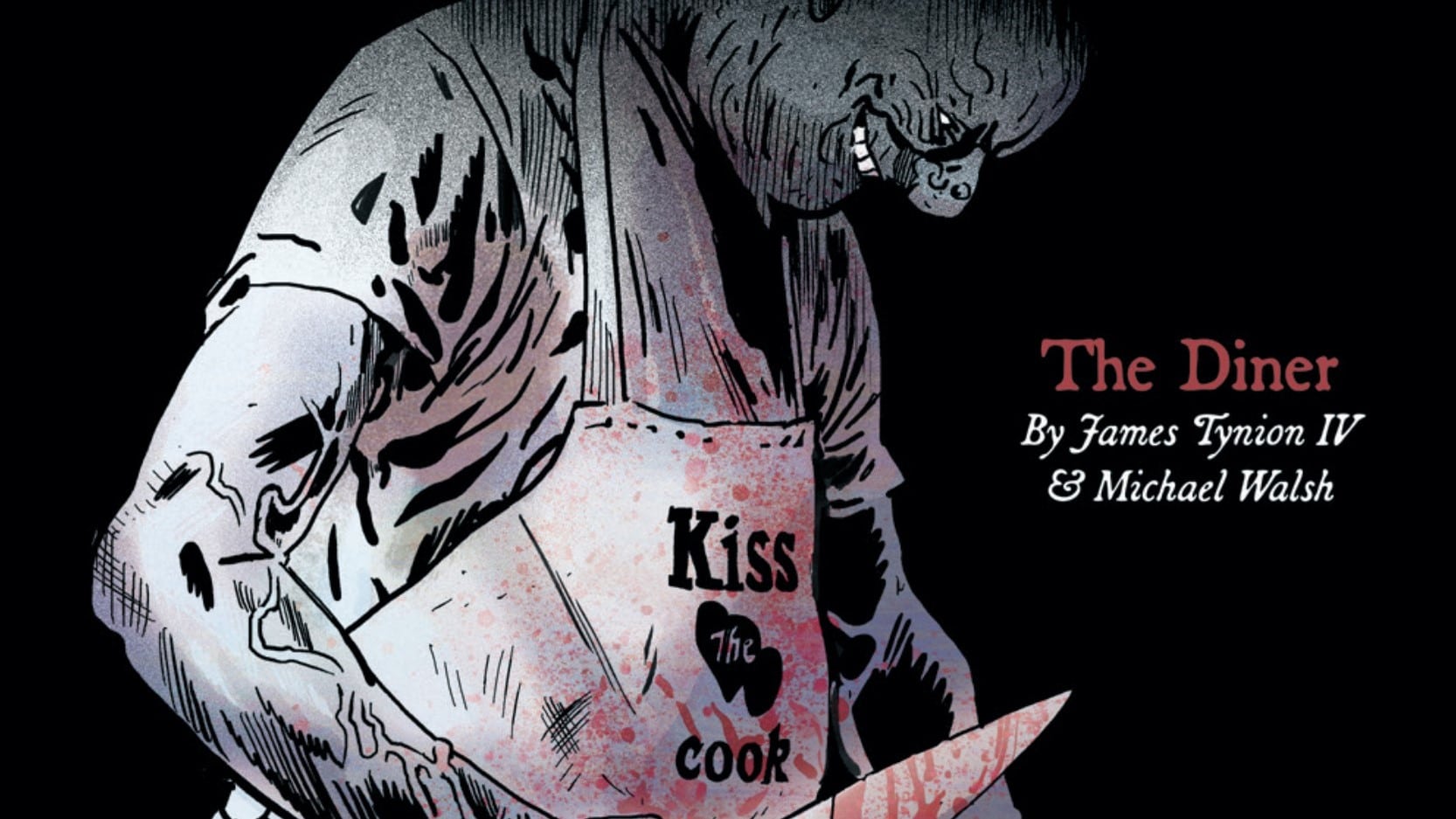A screenwriter named Darren, gripped by jealousy, tries to visit his girlfriend while flashing back to the events of 2020 in The Silver Coin #14, drawn and lettered by Michael Walsh, written by Pornsak Pichetshote, and colored by Walsh and Toni Marie Griffin, with a backup story by Adam Gorham.
Ritesh Babu: Jesus Christ. I was not ready for that.
Mark Turetsky: Yeah, this series just keeps hitting at sensitive places, doesn’t it? From last month’s truly horrific birth horror to this issue, addressing a year in our recent past that I think most media have just kind of tried to brush off and forget about. Maybe it’s too soon, but maybe with trauma so recent, this is the most effective time for a story like this to be published.
Ritesh: Yeah, I don’t know, really. But it does strike a chord. It does feel real. It hits a nerve. Much of The Silver Coin is about capitalistic excess and greed and how it poisons things. And here it manifests less as a systemic evil in some measure and more as just … a horrible manifestation of pent up anxiety. Our lead, Darren, explodes like a goddamn bomb, and the coin was just the spark needed to light the fuse.
Mark: Yeah, from issue #1, the coin picks up on, let’s say, weaknesses of character and exploits them, makes them grotesque. But here, Darren only has the coin for a few minutes within the story. By the time he picks it up, he’s already gone over to Colton’s house to, in his mind, “rescue” Lauren. Maybe “rescue” is too generous a word: “reclaim” might be more his motivation, even if he’s loath to admit it. So he’s already pretty far gone by the time he enters Colton’s house.

Ritesh: The book opens on his perspective, with captions that put us right in his head. It’s a clever move, as by being so rooted in his perspective from the ground up, we’re affected in a way we otherwise would not be, as we come to truly understand what the context of the situation is bit by bit. The anxiety builds and builds, and the dread turns to ultimate despair by the end. The use of the all-black gutters and black as the general page background color for the sequences that put us in Darren’s head and the all-white gutters and white page backgrounds for the “normal” reality and the actuality of events is inspired. It works great, and it works so great you don’t even realize what’s happening truly until the end. You think, “Oh, it’s because it’s a flashback, thus the distinction,” but no, it’s more than that.
None of what’s happening is really “real,” it’s all in Darren’s head, how he sees and interprets reality in all his stir-crazy anxiety as he’s got the coin in his hand. And we’re forced on this anxious and upsetting ride with him, as the book just does not let up. We’re made to feel and experience things from his perspective, and it’s painful.
Mark: Yeah, in a way, it’s similar to Memento, with one narrative moving forward in time, another moving backward. In Memento, they’re differentiated by being in black and white vs. color, and here the color palettes are so different that there’s never really any doubt as to which narrative belongs where, until those final moments, when we snap back to objective “reality.”
It’s also a story that confronts our societal amnesia when it comes to this year. Just recently I was listening to a comedy podcast where one of the hosts mentioned sanitizing groceries, and it was something I hadn’t thought about in so long, but it all snapped back to me. And here it is on the comics page. This weird craze fueled by health officials’ insistence that COVID mostly spreads on surfaces, not through the air, and a weird, viral video making the rounds, where a doctor showed you how to sanitize your groceries. Man, that was a fucked up moment in time.
Ritesh: Absolutely. The texture and tension of that, it’s all there. But what’s effective is also just … this is a book about a very specific kind of male insecurity and anxiety. At the core of this is Lauren and Darren’s relationship. All Lauren wants/expects/needs from Darren is for him to just … listen to her, actually listen to her, and trust her, rather than to just project things or get lost in his own head and judge her off that. And it’s the one thing he keeps failing to do over and over. He’s just laser focused on his work, it’s all work work work, and he hardly seems to listen to her. He constantly brings up how attractive she is, and how Colton, this other guy, might be eyeing her. And it, again, just feels very possessive, and he’s just projecting all his insecure bullshit onto her. He’s treating her like a prize. In this sense, this issue is a direct successor of the previous one that took on that subject more explicitly.
But it is its own thing, about a relationship breakdown in the pandemic. And it really hits hard. Darren just fails to ever listen, and by the end is far too possessed by his own insecurities and anxieties to the point where it’s actively harmful and damaging to the people he cares about. The coin is just a big genre metaphorical extremity and device by which to lay out and explore this horrific breakdown situation. That Pornsak Pichetshote, he sure can write, huh? Dang, he’s good.

Mark: To my continuing shame, The Good Asian is still on my to-be-read pile. I will get to it eventually. I also love how Walsh evolves his character designs over the course of the year, with Darren becoming more and more disheveled, going from clean cut with a well-maintained mustache to scruffy recluse. We can also see Lauren’s hair growing out over the course of the year as well, but she looks a lot better maintained after the lockdown than he does.
I’d also like to point out the return of a few characters from previous issues in Darren’s visions: When he first enters the house, he meets Fiona, the protagonist from issue #2, a girl who’s at sleepaway camp. Then Al, the diner cook from issue #11, and then Cotton Dudley, the witch-finder from issues #5 and #10. We also meet a giant spider-like eyeball thing, which might be a teaser for stories we haven’t gotten yet. As usual, green eyes (and some extreme eye trauma) are some of the major *ahem* visual motifs in this issue. It ties in with Lauren and Colton being actors, but there’s also the question of perception, illusion and likely self-perception on Darren’s part that the issue is playing with.
Ritesh: The Good Asian’s terrific, but so is his prior book Infidel with Aaron Campbell, Jose Villarubia and Jeff Powell. His Shang-Chi short story in Marvel’s Voices: Identity was also brilliant. This continues that trend. I think this is easily among the best issues of the book. It’s right up there with the Ram V issue and the Vita Ayala issue, at least for me. Just really thought-through work, and Walsh is just terrific as ever. He’s so good at not just horror imagery on its own, but pacing said imagery. That 16-panel grid page with the “sewing” of Lauren by Colton in Darren’s vision is so chilling and horrifying. It builds in a terrifying way. The way that’s colored? Chills. I’m sure it was in the script, but actually executing it that effectively is why Walsh nails it on this book.
Given the next one is the last of this arc, I’m curious to see how things wrap up. Where do we go from here? I guess we’ll find out.
Mark: The preview says it’ll explore the many years Louis the firefighter had the coin, between picking it up in issue #1 and getting killed in issue #3 (and the sidequest to the diner in issue #11). Maybe not as heavy on the lore as Walsh’s previous solo issues, but maybe we’ll be surprised. I’m looking forward to it!







